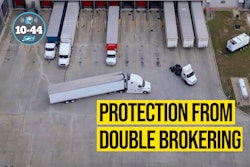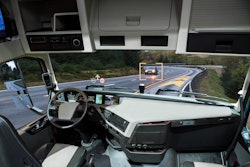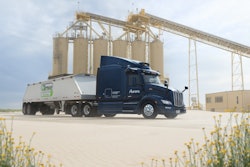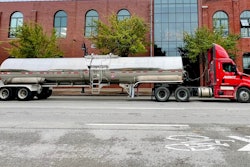Cross-border e-commerce shipments are facing regulatory challenges as a new report warns that the most valuable product categories are also the most exposed to regulatory complexity.
According to ePost Global’s 2025 Shipping Optimization Analysis report, apparel and textiles account for 39.2% of shipment value and are subject to intricate origin verification processes and Free Trade Agreement (FTA) compliance requirements.
The report analyzed 15.6 million international shipments in 2024, valued at $421 million, revealing that nearly 73% of product categories are subject to tariffs, significantly impacting shipping costs and logistics planning.
The report highlighted that 42% of total shipment value is now associated with highly complex customs categories (such as electronics, luxury goods, and food products) that are subject to scrutiny by border authorities.
What this means for motor carriers is that customs complexity is no longer a niche issue but now the new norm, said Kelly Martinez, founder and co-president of ePost Global. High-scrutiny categories are now facing tighter controls at borders.
Partnerships with customs brokers or compliance platforms aren’t just helpful but also a competitive advantage, Martinez said.
“The more a carrier can support or enable pre-clearance, accurate Harmonized System (HS) code usage, and documentation visibility, the more valuable they become to shippers navigating today’s regulatory landscape,” she explained.
[RELATED: 'Big Beautiful Bill' removes biofuel, renewable diesel 'disadvantage,' experts claim]
Cross-border shipments faced significantly longer delays when all tariffs were in effect, said Rosa Rosas, customer operations – specialized, RJ Logistics. Clients experienced delays with border crossings caused by customs brokers making sure goods were correctly classified so they could accurately determine the correct applicable tariff rates and taxes.
Discrepancies in customs procedures can lead to significant consequences, said Alejandro de Anda, director of cross border services at RJ Logistics.
“It could delay shipments, cost penalty money, jeopardize productions and disrupt entire supply chains, so the compliance and collaboration between all parts involved is crucial to maintain safe inventories, delivery on a timely manner, and avoid unnecessary costs,” de Anda said.
Given that regulations and requirements can change with as a little as one or two days of notice, de Anda said that delays at the border due to customs inspections or item reclassification are not uncommon. Additionally, any last-minute changes in documentation can hold up the preparation of customs paperwork, further delaying driver or equipment assignments and the overall execution of transport operations.
With customs regulations constantly evolving, Ben Bidwell, director of North America customs and compliance at C.H. Robinson, pointed out, “What cleared customs yesterday may face new requirements today.”
With shifting trade policies and growing data expectations, Bidwell said entry requirements are becoming increasingly complex. “As a result, even routine shipments may now require additional documentation or longer processing times.”
Leveraging technology
“Every second a carrier is sitting at the border is a wasted second where they could be on the road delivering our customers' shipments,” said Jay Gerard, head of global customs at Nuvocargo.
With shifting policies, Gerard said the burden on brokers and importers to translate and file the trade correctly is “under intense pressure to figure it out and figure it out fast.”
Preparation and communication are key factors to avoid issues, de Anda added. “Be constantly informed on changes in regulations and not fall behind.”
Ensuring data and complete paperwork is critical, including verifying everyone involved in the supply chain, Gerard said, adding that most delays the company sees at the border are related to incorrect or incomplete paperwork at time of crossing.
Automated checks and AI-driven validations are increasingly helping to minimize these issues and save a significant amount of waiting or idle time at the border, he said.
[RELATED: California fleet reduces idling costs by $50k monthly]
In a northbound shipment crossing into the U.S. from Mexico, Gerard said it could potentially have seven parties involved, including two trucking companies, two brokers, two warehouses, a pickup address and a consignee, along with multiple government agencies on both sides of the border.
“Leveraging technology to hold the different parties accountable to Service Level Agreement contracts and ensuring the data transmitted is always correct and consistent will allow your truckers to move their cargo with minimal idle times and allow faster and more compliant deliveries,” Gerard said.
Opportunities for consolidation services
The report also noted a continued shift toward low-value, high-frequency shipments driven by e-commerce.
“There’s a big opportunity here,” Martinez pointed out, as a lot of low-value items are still being shipped one-by-one, a costly endeavor.
“Carriers that offer consolidation services, whether through regional hubs, scheduled pickups, or sortation, can help retailers batch shipments and drive down cost prepackage,” she said.
Regional distribution and zone-skipping models are also gaining momentum, Martinez said. As retailers look for cost efficiency, they’re leaning on regional hubs and bulk transfers.
“Carriers that can plug into these strategies or offer them outright are well-positioned to grow alongside this trend,” she noted.











